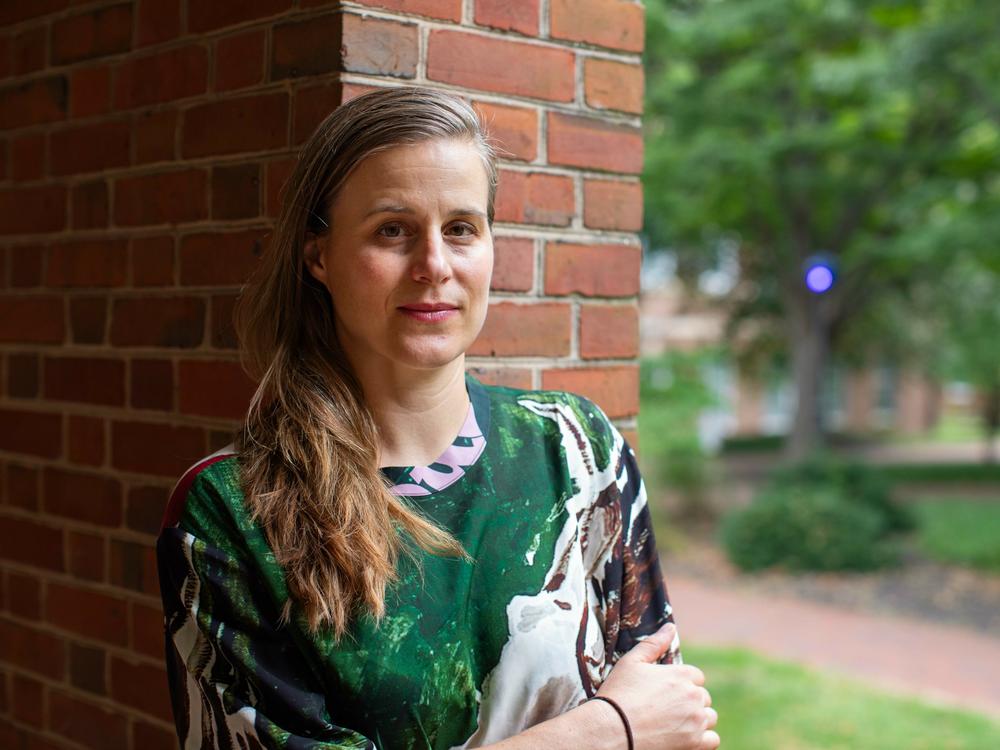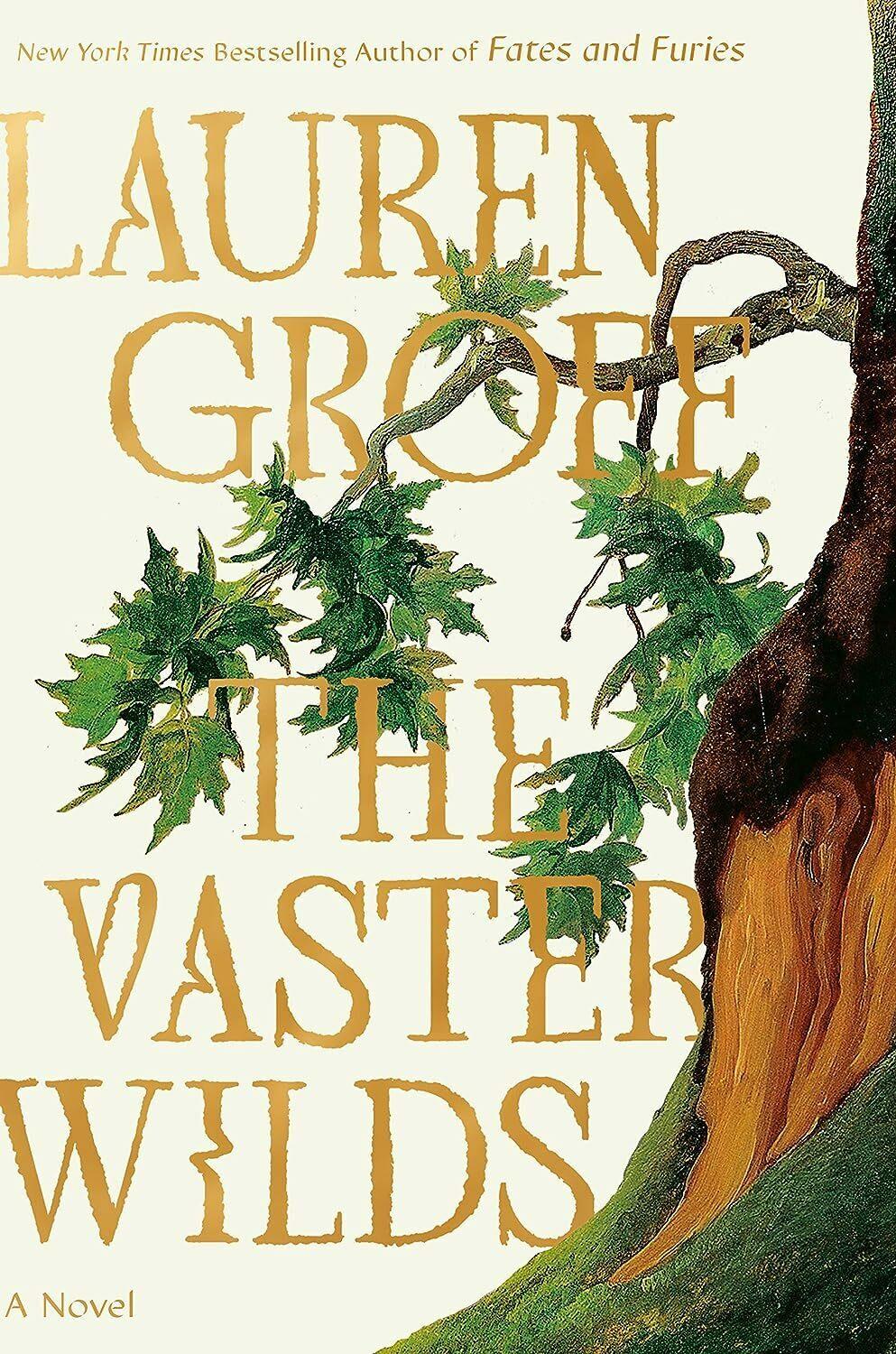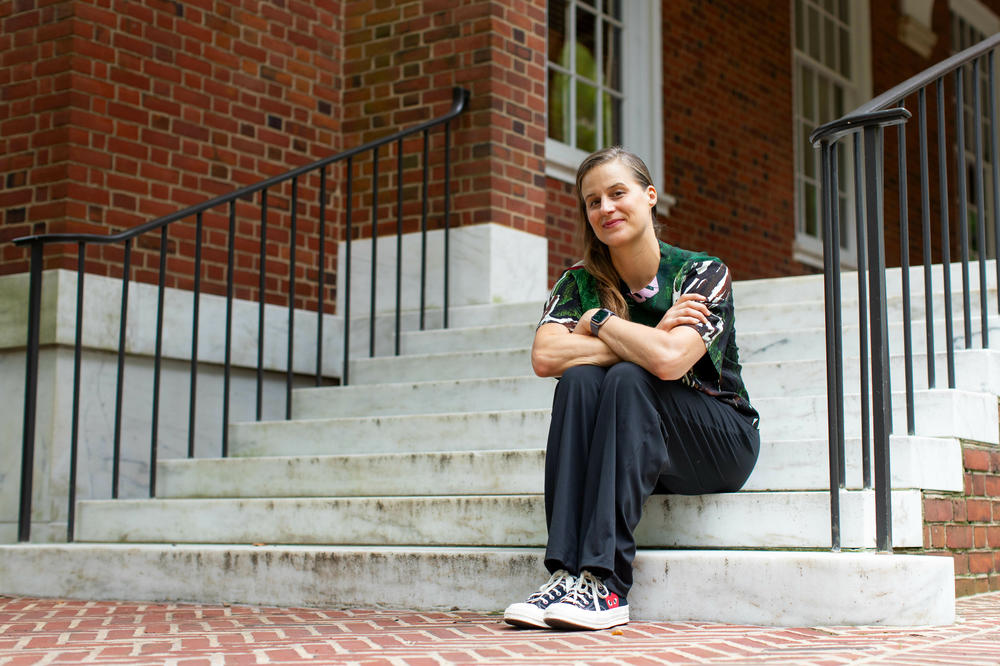Section Branding
Header Content
Lauren Groff has a go bag and says so should you
Primary Content
Lauren Groff has been thinking about the end of the world a lot lately. She says she's got a stockpile of food and supplies should her family need it — MREs, machetes. No guns, but maybe soon. "I think everyone should have a go bag right now," she says. "I think every household should have enough food to last through at least two weeks. This is just logical at this point."
These prepper tendencies stemmed from the pandemic, sure. But there's also the ever present worry about the climate catastrophe. The three-time National Book Award finalist famously (and begrudgingly) lives in Gainesville, Fla., where hurricanes are a constant worry. So she's ready for survival.
You can feel that spirit all throughout Groff's new book The Vaster Wilds. It's a tight and tense novel that takes place in 1610 Jamestown — the starving time. The Powhatan people have the colony under siege, and food is scarce. Colonists are hungry, sick, dying, or dead. Groff's protagonist is a girl. She's got so many different names, she might as well have none. She was adopted from an English poor house and taken over to the colony by a well-off family. And now, at the start of the book, she's run away.
The myths of captivity and the stories we're told about ourselves
Groff's jumping off point for The Vaster Wilds was early American captivity narratives. We meet at a library at Johns Hopkins University, where we got to see a few editions of A Narrative of the Captivity and Restoration of Mrs. Mary Rowlandson. First published in 1682, it's a firsthand account of Mary Rowlandson's kidnapping, captivity and release by Indigenous people.
Puritan leaders took the story and framed it in a way that dehumanized Indigenous people, says Birgit Brander Rasmussen, a professor of English at SUNY Binghamton who is working on a new critical edition of Mary Rowlandson's narrative. "In this way as the Native people [were shown as] these sort of savages that are not even human. They're really just devils or manifestations of Satan," she says. Whereas, the Puritans come off as being "on this godly mission."
Groff says these accounts functionally served as pro-genocidal propaganda. But read deeply into the texts themselves and she says "there are moments of actual humanity."
As the girl in The Vaster Wilds is running, she starts to question everything she's been told about this new world and its supposedly murderous inhabitants — it's back in London where heads on pikes along the bridge were such a common occurrence that nobody seemed to care. "For verily, godlessness and murder, the girl knew, were certainly not limited to the people of this new country," Groff writes.
It's a story about loss of faith. And in Groff's hands, it's a very physical loss. The girl runs and hunts and cooks and pukes all through the book. Or, if she's not eating and puking, she's hungry and weak. It's reminiscent of the famous stories of men surviving alone in the wilderness — think Hemingway, McCarthy, or even Gary Paulsen. But the recasting of a young girl in the survival story in Vaster is more than just surface-level, what-if-style feminism. The girl is going through something "ecstatic," Groff calls it. She's either seeing visions or seeing clearer than ever.
Historical fiction and heroes
The Vaster Wilds is tonally and stylistically different from Groff's last book, Matrix — that book is about Marie de France and a medieval nunnery — but they play with the same themes: feminism, God, the body. Groff was in the middle of writing The Vaster Wilds when the idea for Matrix came to her. So she knocked that out first before coming back to Vaster. The two are actually part of a larger project she's working on. A triptych of sorts, "where I'm sort of seeing from the outside about a thousand years of how we got to where we are now," Groff said.
While Matrix dealt with 12th century Catholicism, and Vaster with 17th century Protestantism, Groff is currently working on the third installment that will take place now.
"What I really want to do is talk about ideas of God, right? And the changeable ideas of God and how those ideas have sent us careening through the Anthropocene to the cusp of absolute catastrophic climate times," she said.
Groff's best known work, Fates and Furies, was a current-day examination of domesticity. She used to be a snob about historical fiction, she said. But working in it for the past two books, she found that the genre can help democratize history. It can help untether us from the hero narratives that litter the Western canon. "It doesn't have to be Napoleon standing on the mountain. It can be the masses of people swarming to create that historical moment. That could be the interesting thing," she says. "Not this 'single hero,' which I find a very corrosive and almost evil narrative that we have brought into."
From centuries old religious texts to superhero blockbusters, we've all been fed stories about the bad guys and the people coming to save us from the bad guys. The thrust of Groff's literary ambitions seem to be about not waiting to be saved, but a call for survival.
Copyright 2023 NPR. To see more, visit https://www.npr.org.



